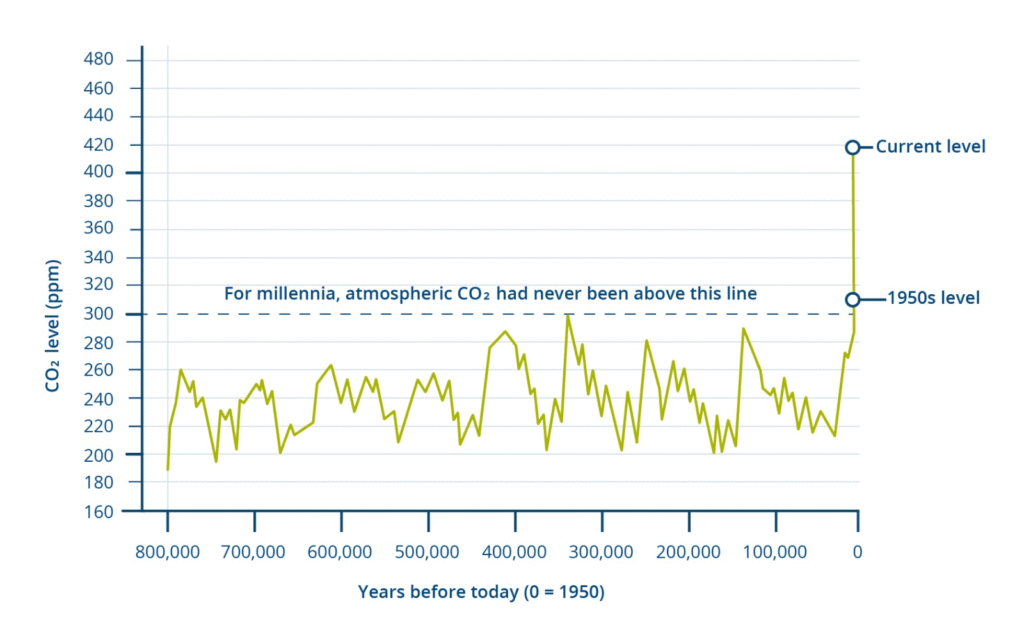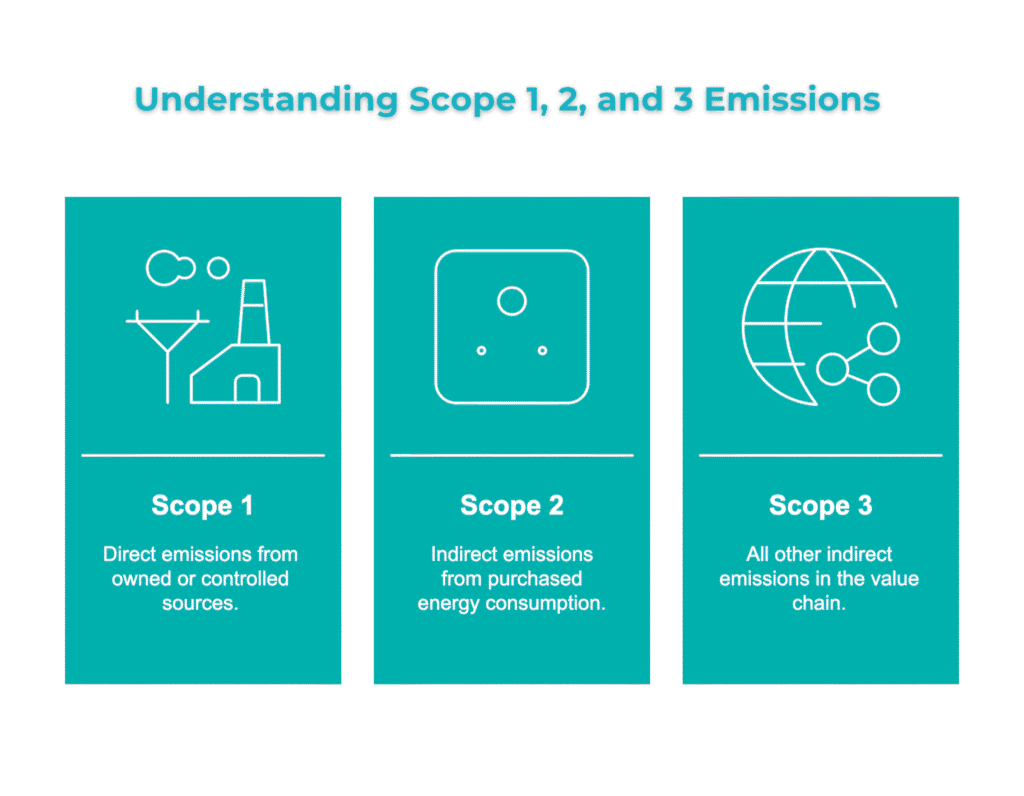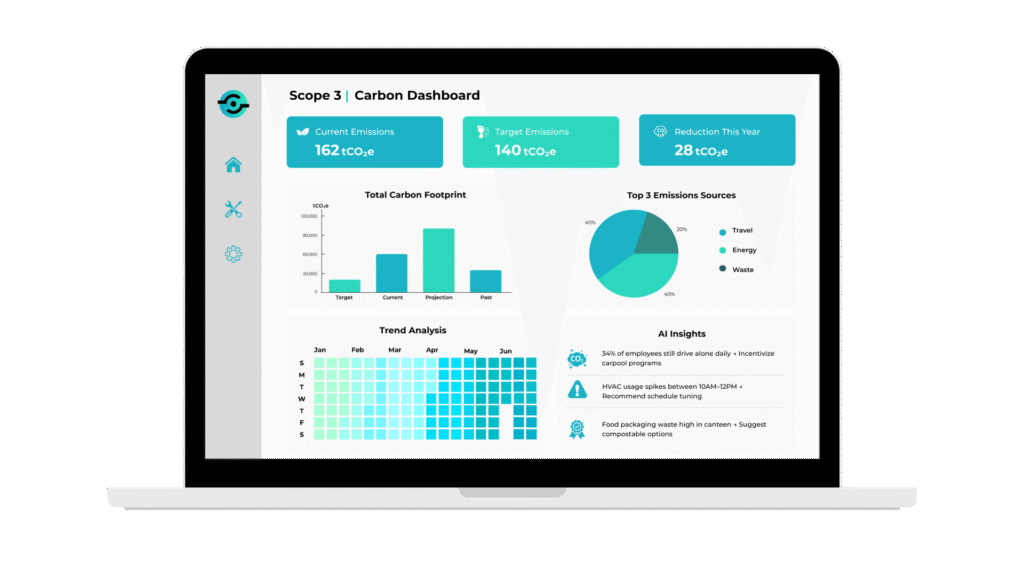Introduction

(NASA, n.d., as adapted from Lüthi et al., 2008; MacFarling Meure et al., 2006; Petit et al., 1999; NOAA Mauna Loa CO₂ record)
In August 2021, the Intergovernmental Panel on Climate Change (IPCC) released its Sixth Assessment Report, confirming that global temperatures are already 1.1°C higher than pre-industrial (18501900) levels. In 2024, the Copernicus Climate Change Service declared it the “warmest year on record globally and the first calendar year when the average global temperature exceeded 1.5°C above its pre-industrial level” (Copernicus, 2025).
Climate action is no longer optional or abstractit’s a critical necessity. With net-zero targets tightening, and regions like Europe (under CSRD), Hong Kong (HKEX), and California (SB 253) mandating comprehensive disclosure of Scope 3 emissions, companies worldwide must urgently address emissions hidden within their supply chains and business practices.
Understanding Scope 1, 2, and 3 Emissions

According to the Greenhouse Gas Protocol (GHG Protocol), emissions are categorized into three scopes:
- Scope 1: Direct emissions from owned or controlled sources (e.g., company-owned vehicles, manufacturing processes).
- Scope 2: Indirect emissions from purchased electricity, steam, heating, and cooling consumed by the company.
- Scope 3: All other indirect emissions occurring in a company’s value chain, including business travel, waste disposal, and supply chain activities.
Why Scope 3 Matters?
Research shows that Scope 3 emissions can account for up to 90% of a company’s total emissions, making them both the largest and most complex emissions category to manage (World Economic Forum, n.d.). Employee travel and accommodations can represent a substantial portion of a company’s Scope 3 emissions, especially for service-based organizations, though the precise percentage varies by sector and specific company activities (GHG Protocol, n.d.). Regulatory pressures from Europe (CSRD starting FY 2024), Hong Kong (mandatory for LargeCap issuers by FY 2026), and California (SB 253 for companies with >US$1B revenue) increasingly demand complete transparency and accurate disclosure of these emissions.
Challenges in Addressing Scope 3 Emissions
Companies face several obstacles when tracking and reducing Scope 3 emissions:
- Data Invisibility and Lack of Transparency: Emissions data is often scattered, incomplete, or difficult to verify (Busch et al., 2022).
- Accuracy of Employee Travel Data: Travel-related emissions can be severely underestimated due to poor tracking methods (GHG Protocol, n.d.).
- Difficulty Measuring Disposable Waste Impact: Single-use items generate significant hidden emissions, yet remain largely untracked (Colorado Environmental Center, 2023).
- Vendor and Supply Chain Accountability: Emissions from suppliers are often invisible due to fragmented reporting and lack of baseline measurements (Carbon Direct, 2025).
- Lack of Product-Level Traceability: Limited product intelligence enrichment to track emissions accurately (OECD, 2024).
- Behavioral Change: Encouraging employees and stakeholders to engage actively in emission reduction requires making the invisible visible, creating motivation, and offering tangible incentives (TÜV SÜD, 2023).
How Carbon AI Solves the Scope 3 Challenge?

Carbon AI uniquely addresses these challenges through:
- Bottom-Up Emission Tracking: Unlike top-down estimates, Carbon AI uses granular real-time data collection for greater precision.
- AI-Driven Accuracy: Advanced AI algorithms validate and enhance data accuracy, including anomaly detection.
- Blockchain Traceability: Blockchain-enabled record-keeping ensures transparency, accountability, and trust.

For example, while we have not yet formally partnered with major international events like the FIFA World Cup, we believe Carbon AI would be an ideal solution for such large-scale platforms. Internal employee travel for these events, where hundreds of staff travel globally, and fan travel, which according to FIFA’s own sustainability reporting makes up one of the largest sources of total emissions, are both significant and complex categories of Scope 3. Our bottom-up methodology could provide real-time tracking of emissions from flights, hotel stays, and travel-related activities. This offers organizations the ability to nudge behavior change, ensure compliance, and link sustainability actions directly to financial outcomes.
Concrete Benefits for Companies
- Direct Financial Impact: Identify hidden emission-related costs and avoid regulatory sanctions.
- Executive Alignment: Helps Chief Sustainability Officers and CFOs achieve visibility and align sustainability goals with financial performance.
- Compliance and Leadership: Meet evolving regulatory requirements and position your organization as an industry leader.
- Brand and Credibility: Enhance your reputation with customers, investors, and stakeholders through transparent and credible sustainability initiatives.
- Accelerated Net-Zero Goals: Lead by example with actionable strategies and clear measurable results.
Call to Action
Ready to unlock your company’s Scope 3 potential?
- Contact us directly to explore tailored solutions.
- Stay tuned for our upcoming Free Emissions Calculator.
- Interested in a pilot or proof of concept (POC)? Let’s discuss your goals.
We welcome your comments, feedback, and ideas. Reach out today!

